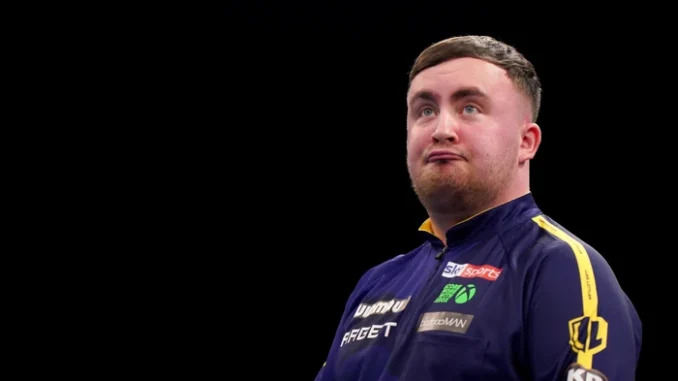
Luke Littler’s recent experience in the Premier League Darts has been marred by an unfortunate incident involving crowd behavior, leaving the young star feeling less than comfortable. The rising star of the darting world found himself at the center of attention not just for his performance on the oche, but also for his reaction to the boos and whistles that emanated from sections of the audience.1 This incident has ignited a conversation about the treatment of players in the sport and the impact that crowd behavior can have on their mental state and performance.
Littler’s journey in the Premier League has been a whirlwind of success and growing recognition. He has quickly become a fan favorite, captivating audiences with his talent and his composed demeanor. However, even the most seasoned professionals can be affected by the atmosphere in the arena, and Littler’s recent experience highlights the challenges that players can face when dealing with unruly or disrespectful spectators.
The incident in question occurred during a crucial match. As Littler was preparing to throw, a section of the crowd began to boo and whistle, attempting to disrupt his concentration. While some might dismiss this as mere playful banter, it clearly had an impact on Littler. He appeared visibly uncomfortable and later expressed his feelings about the incident.
Littler’s reaction was one of disappointment and perhaps a touch of bewilderment. He acknowledged that crowd interaction is part of the sport, but he also emphasized the importance of respect. He made it clear that while he understands the passion and excitement of the fans, there is a line that should not be crossed. He expressed his hope that such incidents would not be repeated in the future, emphasizing that they detract from the enjoyment of the sport for both the players and the genuine fans.
The incident has sparked a wider debate about the role of the crowd in darts and the responsibility of spectators to behave respectfully. While passionate support for one’s favorite player is encouraged, there is a consensus that deliberately attempting to disrupt an opponent’s concentration is unacceptable. Such behavior not only disrespects the players but also undermines the integrity of the sport.
The incident has also raised questions about the measures that can be taken to prevent similar situations from occurring in the future. Some have suggested that stricter policing of crowd behavior might be necessary, while others have emphasized the importance of educating fans about appropriate etiquette. There is a general agreement that a balance needs to be struck between allowing fans to express their enthusiasm and ensuring that players are not subjected to harassment or undue pressure.
Littler’s experience serves as a reminder that even the most talented and composed athletes are human beings, and they are not immune to the pressures and distractions that can arise in a competitive environment. The mental aspect of sports is often underestimated, and incidents like this highlight the importance of creating a supportive and respectful atmosphere for all participants.
The darts community is now looking to the future, hoping that this incident will serve as a learning experience for everyone involved. There is a desire to ensure that darts remains a sport where players feel respected and valued, and where fans can enjoy the thrill of competition without crossing the line of acceptable behavior. Littler’s voice has been heard, and it is now up to the organizers, the players, and the fans to work together to create a more positive and inclusive environment for the sport. The hope is that this incident will be a catalyst for change, leading to a greater understanding of the impact of crowd behavior and a renewed commitment to respect and sportsmanship. The future of darts depends not only on the talent of its players but also on the support and behavior of its fans.
Leave a Reply